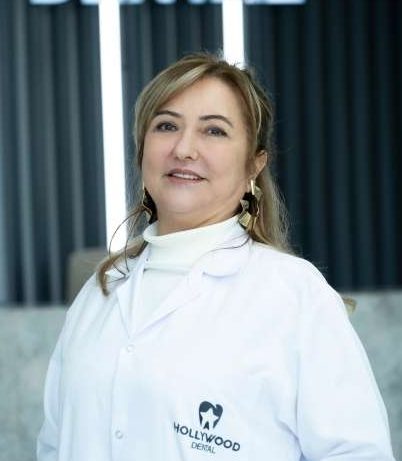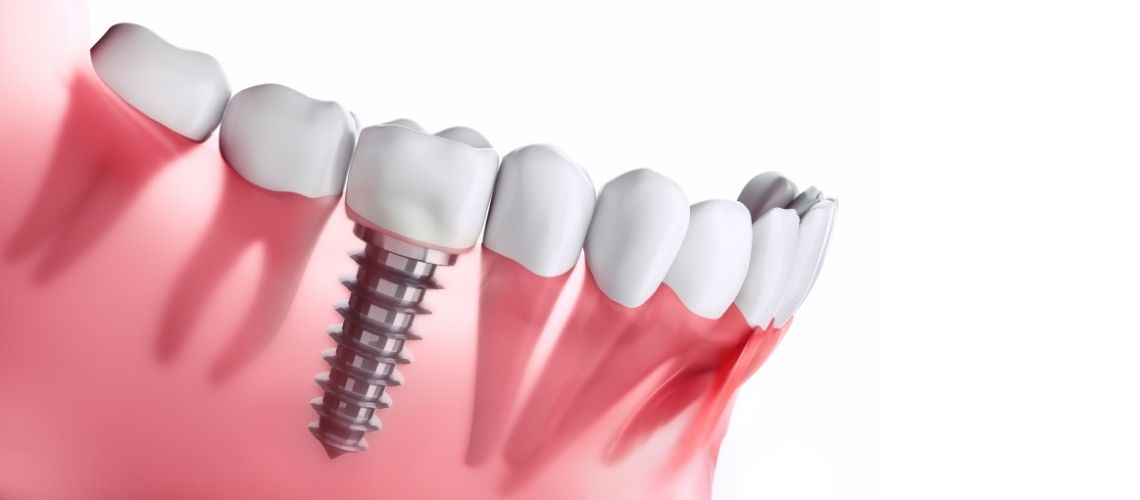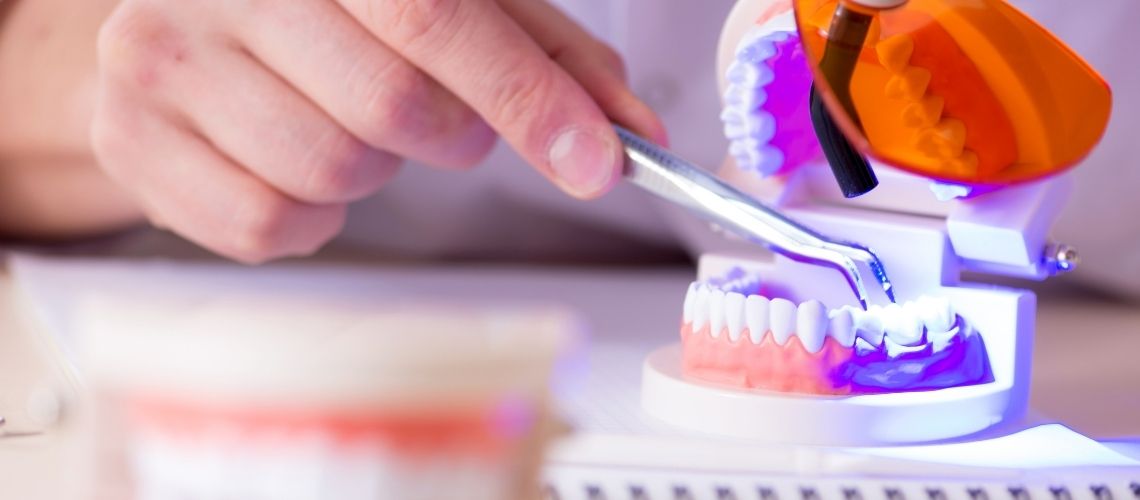Crooked teeth are a common condition among individuals. It especially appears during the mixed dentition period of children. This health issue can lead to various difficulties such as speech problems and eating disorders. Additionally, it can cause unwanted changes in the facial structure. The etiology of this condition is not fully known, but early diagnosis and effective treatment require interdisciplinary teamwork. Orthodontists use different methods such as braces and clear aligners during the treatment process. These methods help patients achieve a healthier mouth by correcting the structure of their teeth.
Treatment Methods and Effects of Crooked Teeth
Crooked teeth can cause both aesthetic and functional problems. Orthodontics aims to solve these issues through mechanical treatments. As each person’s facial structure and aesthetic needs are different, the treatment plan is personalized. The treatment process aims to determine the ideal tooth position. During this process, facial balance and profile aesthetics are considered. Work is done on the occlusion, which is how the teeth come together, aiming for optimal functionality.
Treatment Methods:
- Braces: Gradually move the teeth to bring them into proper alignment.
- Clear aligners: Provide an invisible treatment option and reduce aesthetic concerns.
- Palatal expanders: Increase the width of the upper jaw, creating space for the teeth.
While correcting the occlusion, proper positioning of the maxillary and mandibular teeth is important. Jaw positions are meticulously adjusted to achieve a smile that is in harmony with facial aesthetics. Most malocclusion cases are caused by genetic and environmental factors. However, these conditions can be corrected with effective orthodontic interventions.
Classification Methods for Malocclusion
The developed classification system provides a basis for defining and treating this condition. According to the system, malocclusion is divided into three main classes:
Class I (Neutral Occlusion):
- The mesiobuccal cusp of the maxillary first molar aligns with the buccal groove of the mandibular first molar.
Class II (Distal Occlusion):
This classification is divided into two sections:
- Section 1: The maxillary incisors protrude forward with an excessive overjet, often accompanied by a short upper lip.
- Section 2: The maxillary central incisors are inclined towards the palate, often with a normally sized mandible.
Class III (Mesial Occlusion):
Mandibular teeth advance ahead of the maxillary teeth. This classification is divided into three types:
- Type 1: The arch has an abnormal shape.
- Type 2: The mandibular teeth are inclined lingually.
- Type 3: The maxillary teeth are inclined lingually.
The Dewey classification addresses Class I malocclusion in more detail and defines three types:
- Type 1: Crowding of the incisors and/or labial positioning of the canines.
- Type 2: Protrusion of the maxillary incisors.
- Type 3: Edge-to-edge or crossbite of the anterior teeth.
The Ackerman and Profitt classification system considers malocclusion in a broader framework and divides it into six main classes:
- Class I: The maxillary teeth are slightly ahead of the mandibular teeth.
- Class II: The maxillary teeth are significantly ahead of the mandibular teeth.
- Class III: The mandibular teeth are significantly ahead of the maxillary teeth.
- Class IV: The maxillary teeth are significantly behind the mandibular teeth.
- Class V: The maxillary teeth are significantly ahead of the mandibular teeth.
- Class VI: The mandibular teeth are significantly behind the maxillary teeth.
These classification systems guide orthodontists in identifying the type of malocclusion and determining appropriate treatment methods. Each classification requires unique treatment approaches and intervention methods.
Causes of Malocclusion
Many factors can contribute to the occurrence of malocclusion. Genetic and environmental factors are often the main causes of this condition. Under these two main categories, various characteristics and factors can trigger the development of malocclusion.
Genetic Factors:
- Inherited traits are one of the most important causes of malocclusion.
- The sizes and shapes of the jaw and teeth often show similarities within a family.
- Discrepancies in the sizes of the tooth and jaw structures, especially the mismatch between the upper and lower jaws, can cause malocclusion.
- Research shows that inherited factors increase the risk of malocclusion.
- Certain types of malocclusion, such as mandibular prognathism, can be passed down from generation to generation.
In addition to genetic factors, environmental factors also play a significant role in the formation of malocclusion. Certain habits during childhood, in particular, can negatively affect jaw development.
Environmental Factors:
- Prolonged sucking habits cause changes in the tooth and jaw structures.
- Habits such as thumb sucking and lip biting can cause teeth to deviate from their normal alignment.
- Continuous pressure applied to the palate can lead to misalignment of teeth and deformation of the jaw structure.
- These behaviors can cause the upper incisors to be pushed outward and the lower incisors inward.
These factors contributing to the development of malocclusion can significantly reduce an individual’s quality of life. A combination of genetic and environmental factors contributes to the development of crooked teeth and a misaligned jaw structure. Early diagnosis and intervention are crucial in overcoming these problems. Therefore, regular dental check-ups are recommended for children and young adults. This allows for the early detection of malocclusion and the initiation of necessary orthodontic treatment.
Prevalence of Malocclusion
Malocclusion occurs at varying frequencies in different populations due to various factors. Children are particularly prone to this problem during the mixed dentition period. While there is no general frequency difference between males and females, females often require orthodontic treatment earlier as their tooth eruption processes progress faster than males.
- In females, the tooth eruption process is rapid.
- Early orthodontic intervention may be necessary.
Additionally, research has shown that there are differences in the prevalence of malocclusion based on ethnic background. For example, it has been found that this condition is more common in African populations. However, there is no conclusive evidence that this is genetically based.
Changes in Crooked Teeth
Crooked teeth can cause serious problems with oral health. This condition usually arises due to hypodontia or trauma. The loss of permanent teeth disrupts the existing tooth alignment and creates a predisposition for the development of crooked teeth. The inability of teeth to take their ideal positions also negatively affects adjacent teeth.
- The gum tissue under the crooked teeth may prevent the teeth from erupting.
- Crooked teeth can cause adjacent teeth to shift and tilt towards the gaps.
After the loss of a permanent tooth, the corresponding lower tooth may erupt into the space left by the lost upper tooth. This leads to changes in the position of the lower tooth and occlusion problems. Additionally, gaps form where the crooked teeth are located, making it even more difficult for the crooked tooth to erupt. Impacted third molars often appear in adolescence or early adulthood. If these teeth are not removed or corrected, they can lead to greater occlusion problems. During this process, other teeth around the crooked teeth may also be negatively affected, further deteriorating overall oral health.
Symptoms and Examination Process
Malocclusion manifests itself with various symptoms. One of the most noticeable signs of this condition is the misalignment of the teeth. Misaligned teeth require necessary adjustments. These abnormalities in the teeth can cause speech problems and negatively affect an individual’s social interactions. Additionally, there is a decrease in chewing function, which means that food is not sufficiently ground. This can cause additional stress on the digestive system. Mouth breathing, especially seen in children, is another indicator of malocclusion. This breathing pattern can cause changes in facial structure. These changes in facial aesthetics can become more pronounced over time.
Points to consider during the examination process:
- Class I molar and canine classification
- 1 to 2 mm overjet and overbite
- Minimal tooth crowding
- Presence of protective guidance movements
- Alignment of the mandibular and maxillary tooth arches
- Alignment of the maxillary and mandibular midlines with the face
These features are crucial in defining an ideal occlusion. Therefore, these criteria are carefully evaluated during the examination. This assessment forms the basis for early diagnosis of malocclusion and the creation of an effective treatment plan.
Diagnostic Methods for Malocclusion
Malocclusion develops due to irregular tooth alignment and jaw discrepancies. It is often noticed by primary dentists. These dentists, who evaluate the oral health of patients, can be general dentists or pediatric dentists. Patients showing signs of malocclusion are referred to an orthodontist for a more detailed examination. The initial examination usually begins with a simple intraoral inspection. This inspection may be sufficient to determine the presence of malocclusion.
However, when a more comprehensive evaluation is needed, radiographic methods are used. The radiographic methods used for accurate diagnosis and treatment of malocclusion are:
- Panoramic Radiography: Used to examine the patient’s teeth and jaw structure with a general overview.
- Cone Beam Computed Tomography (CBCT): Provides three-dimensional detail and allows analysis of the facial structure, airway, and temporomandibular joint structure.
- Cephalometric Projections: Provide a lateral view of the face and reveal the relationships between the jaws and the skull. These images help determine dental age and growth potential.
Each radiographic method provides clinicians with the opportunity to evaluate the condition of the teeth and jaws. These methods ensure effective diagnosis of malocclusion. The planning and implementation process of the treatment is shaped based on these evaluations.
Treatment Options for Malocclusion
Malocclusion is a common dental irregularity affecting many individuals. Treatment methods vary depending on the patient’s age, type, and severity of the malocclusion. The main methods used to correct crooked teeth include palatal expanders, spacers, braces, and clear aligners.
Palatal expanders are especially effective for adolescents. These devices are designed to widen the narrow palate structure, allowing for better alignment of the teeth.
- Traditional palatal expanders
- Rapid palatal expanders
Spacers are used to create sufficient space between the teeth before or during orthodontic treatment. The duration of use varies depending on the type of material.
- Rubber spacers: Usually used for 1-2 weeks.
- Metal spacers: Can be used for more than six weeks.
Braces treatment is the most commonly used method for correcting malocclusion. This treatment uses brackets and arch wires made of different materials to bring the teeth into a straight line.
- Metal brackets: The most commonly used type, providing strong correction.
- Ceramic brackets: Tooth-colored and provide a more aesthetic option.
- Lingual brackets: Placed on the inner surfaces of the teeth and are not visible from the outside.
In recent years, clear aligners have become especially popular among adults. This method uses removable clear trays made with digital scanning and CAD/CAM technologies. The treatment progresses with a series of trays, each worn for 1-2 weeks.
Clear aligners are ideal for patients who have aesthetic concerns or cannot regularly visit the orthodontist. However, the effectiveness of this method can vary depending on patient compliance and the severity of the malocclusion. Traditional braces may offer a more effective solution for severe malocclusion cases.
Treatment methods for malocclusion continue to develop with technological advancements. More innovative treatment methods in the field of orthodontics are likely to emerge in the future. Each treatment option plays an important role in the process of correcting teeth and helps patients achieve a healthier and straight dental structure.
Other Notable Conditions
Malocclusion can develop due to a combination of various factors. Genetic factors play a major role first. Genes passed down from parents can affect an individual’s tooth and jaw structure. In addition, some behavioral habits can also cause malocclusion:
- Thumb sucking
- Prolonged pacifier use
Additionally, skeletal abnormalities in the jaw and facial area are also influential in the formation of malocclusion. Abnormal shapes or sizes of the jaw or face can prevent proper alignment of the teeth. Also, tooth loss or insufficient space can cause incorrect placement of the teeth.
Orthodontists conduct comprehensive evaluations to understand the underlying causes of malocclusion. This process includes a detailed examination of the patient’s medical history, physical examinations, and, if necessary, requesting imaging tests such as panoramic radiographs. The findings obtained help in making an accurate diagnosis and creating an effective treatment plan.
Potential Health Issues Related to Malocclusion
Untreated malocclusion can have serious effects on oral and dental health. First, crowding of the teeth caused by malocclusion can cause food particles to get stuck. This makes cleaning difficult, leading to an increased risk of tooth decay. As plaque buildup increases, the risk of inflammation in the gums also rises. This inflammation is mostly known as gingivitis. On the other hand, malocclusion can also lead to the following health problems:
- Tooth loss
- Impacted teeth
- Jaw problems
- Damage to adjacent and opposite teeth
These complications negatively affect an individual’s overall oral health and require treatment.
Prevention Methods and Patient Advice
Malocclusion is a condition that can develop under the influence of genetic factors. Therefore, it can be difficult to prevent it completely. However, controlling certain environmental factors can reduce the risk of developing this condition in children. Early intervention can prevent the progression of malocclusion and require less complex treatment methods. Parents can take the following preventive measures:
- Stopping the thumb-sucking habit at an early age.
- Limiting the use of bottles and pacifiers.
Orthodontic examinations are crucial for the early diagnosis of malocclusion. Regular dental visits allow for the early detection of potential problems. During these visits, the development of teeth and jaws is examined in detail. If signs of malocclusion are observed, patients are promptly referred to an orthodontist for appropriate treatment methods. This process prevents the progression of malocclusion and contributes to a healthier dental structure.
Management of Malocclusion with the Health Team
The management of malocclusion brings together healthcare professionals from different disciplines. This collaboration allows patients to benefit from early diagnosis and effective treatment. General dentists are the first to notice malocclusion symptoms during routine examinations. When early diagnosis is made, an appropriate treatment plan is created depending on the severity of the condition:
- If the malocclusion is mild or moderate, general dentists can start the treatment.
- Severe cases are referred to orthodontists.
- For cases requiring surgical intervention, oral surgeons are involved.
During the treatment process, the role of dentists is crucial, especially for patients with orthodontic appliances. Proper oral hygiene education and regular check-ups are essential for maintaining a healthy oral environment and preventing complications:
- Oral hygiene education
- Prophylaxis
- Tartar cleaning
Frequently Asked Questions
How long does it take to fix crooked teeth?
The time required to fix crooked teeth typically ranges between 18 and 24 months. However, some mild cases can be treated in a shorter period. For example, some braces may only take 6 months. On the other hand, more complex cases may take 1 to 1.5 years. Therefore, the treatment duration varies depending on the initial condition of the teeth and the individual’s age. A personalized treatment plan for each person ensures effective management of this process.
Can crooked teeth be corrected with veneers?
Crooked teeth can be corrected using veneers. First, the current condition of the teeth is determined through a thorough examination. Then, the appropriate veneer material is selected and adjusted according to the degree of crookedness. Veneers are directly applied to the teeth, making them appear straighter. This way, both an aesthetic smile is achieved and dental health is maintained.
How do you fix just one crooked tooth?
If a person has only one crooked tooth, this can usually be corrected with short-term orthodontic treatments. Transparent aligners can be used to treat the tooth without the need for braces. This method gradually adjusts the pressure on the tooth to straighten it. Additionally, conventional braces can also be used. These braces help correct the crookedness by adjusting the pressure on the tooth. Both treatment methods work without damaging the surrounding tissues. This process usually takes a few months.
Do clear aligners correct crooked teeth?
Clear aligners are an effective method for correcting crooked teeth when the misalignment is not severe. In this treatment process, specially designed clear aligners are applied to the teeth. During the treatment, the teeth gradually move to the desired position. Customized aligners for each patient are regularly replaced depending on the structure of the teeth. Thus, the teeth straightening process progresses gradually and systematically. Patients can achieve an aesthetic and functional smile with this method.
Can teeth be straightened without braces?
It is not possible for teeth to straighten on their own. Orthodontic treatment is necessary for crooked teeth. Especially non-brace teeth straightening methods eliminate aesthetic concerns and make the treatment process easier. Treatments using clear aligners are preferred for their aesthetic appeal. Patients are advised to consult a specialist orthodontist for teeth straightening procedures. This way, it is possible to achieve dental health and an aesthetic smile.
What can crooked teeth lead to?
Crooked teeth can lead to digestive problems due to improper chewing. They can also cause excessive wear on the teeth and gums. This can trigger jaw disorders. A crooked tooth structure can cause jaw tension and temporomandibular joint disorders. Consequently, chronic headaches may also be among these health issues.
How do you clean crooked teeth?
To clean crooked teeth, first, brush the teeth thoroughly with a soft-bristled toothbrush. Then, floss daily to carefully clean between the teeth. Additionally, interdental brushes should be used to reach difficult areas. It is important to rinse regularly with an antimicrobial mouthwash. Finally, regular visits to the dentist should be scheduled to ensure the health and hygiene of crooked teeth.
Can zirconium be used on crooked teeth?
Zirconium veneers can be used for crooked teeth. However, the degree of crookedness is an important factor. If there is moderate or severe crookedness, orthodontic treatment may be necessary before applying veneers. This way, the teeth can be corrected, and zirconium veneers can provide more effective results. Zirconium and strong ceramics are often preferred over metal-based veneers due to their aesthetic and durable advantages. These veneers are an ideal option to improve the appearance of the teeth.

Dentist Handan Nohutcuoğlu graduated from Ege University Faculty of Dentistry in 1987. He has gained experience in various fields by working in many dental polyclinics throughout his career, combining his knowledge and experience. He continues to work at Hollywood Dental at the moment.









